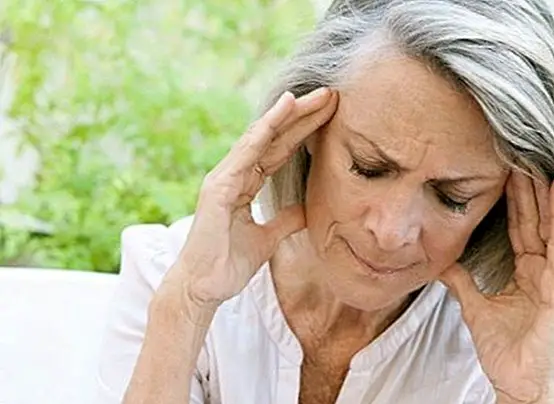What is the stroke and what are its warning symptoms
Also known by the name of brain Atack, and with the medical terms of cerebrovascular accident, cerebral stroke Or simply apoplexy, the stroke it consists of an emergency or medical emergency, since rapid diagnosis is essential to quickly start a treatment that helps stop the effusion, usually by dissolving the clot or controlling the bleeding.
That is to say, stroke occurs when blood flow to the brain is disturbed or stopped, so that when a certain area of the brain appears, it begins to die when it stops receiving both the oxygen and the nutrients it needs to function. 
Therefore, knowing what symptoms and signs may serve as a warning signal against a brain accident is always fundamental, especially to help us recognize them easily and quickly.
What is the stroke or stroke?
Stroke is the arrest of blood flow to the brain. When you suffer, in just a few minutes the brain cells begin to die, hence the speed of diagnosis and treatment are simply fundamental.
There are two types of strokes, which we will summarize below:
- Ischemic stroke: caused by the presence of a blood clot, which blocks or blocks a blood vessel in the brain.
- Hemorrhagic stroke: caused by the rupture of a blood vessel, which then tends to bleed into the brain.
It is also possible that a Transient ischemic attack, also known as "mini-stroke", which occurs when the blood supply to the brain is interrupted, but this interruption is brief.

Symptoms of stroke: warning signs
The symptoms that tend to occur when a person is suffering a stroke are the following:
- Numbness or weakness that comes on suddenly. It can occur on the face, arms or legs, especially on one side of the body.
- Sudden confusion. Especially when talking or trying to understand the other person.
- Sudden difficulty in walking. There is loss of balance and coordination of movements. In addition, it is common for the person to feel dizzy.
- Sudden eye problems. It is common that the person may not be good for one or both eyes.
- Sudden headache. It is a severe headache, that appears suddenly, and that does not have a known cause.
Moreover, we can summarize the symptoms in the following section: difficulty walking, seeing and speaking. In addition, weakness arises especially on one side of the body. 
What should we do?
If we observe any of these symptoms in someone who is close to us (a family member, a friend, a co-worker or a stranger if we are in the street), or even we have them ourselves, we must go quickly to the nearest hospital to start a treatment quickly.
After the diagnosis is quickly applied a acute therapy for stroke, whose purpose is to try to stop the effusion controlling the hemorrhage and / or dissolving the clot (depending ultimately on the type of attack that has occurred).
On the other hand, it is common medicinal therapy with anticoagulant and antiplatelet drugs, which help to dissolve the clots that are obstructing the flow of blood to the brain.
As established by many medical experts, the maximum time for a patient with stroke to start treatment should be 3 hours maximum, that's why getting to the hospital as soon as possible is fundamental.
Can we do something to prevent them?
Although in many cases it is not possible to prevent a certain cerebrovascular disease, the truth is that the best treatment is always prevention, especially in the case of brain attacks.
Why? Mainly because there are some risk factor's that increase the chances of suffering one.
For example, having high blood pressure, having diabetes or high levels of cholesterol and triglycerides, smoking and suffering from heart problems. This article is published for informational purposes only. It can not and should not replace the consultation with a Physician. We advise you to consult your Trusted Doctor. ThemesCardiovascular diseases


